Fort Collins, CO Pollen and Allergy Report for Summer 2023
Pollen Allergy Trends in Fort Collins, CO
When is pollen lowest in Fort Collins, CO?

February
Lowest month total PPM
Avg. PPM
When is pollen highest in Fort Collins, CO?

March
Highest month total PPM
Avg. PPM
How does pollen in Fort Collins, CO compare to Colorado?
Fort Collins has a higher average PPM than the state of Colorado.
Fort Collins yearly avg PPM:
Colorado yearly avg PPM:
How does pollen in Fort Collins, CO compare to the USA?
Fort Collins has a higher average PPM than the USA.
Fort Collins yearly avg PPM:
USA yearly avg PPM:
Is pollen worse this year in Fort Collins, CO?
Spring 2023 was worse than spring 2022.
Spring 2023 PPM:
Spring 2022 PPM:
Average PPM in Fort Collins, CO
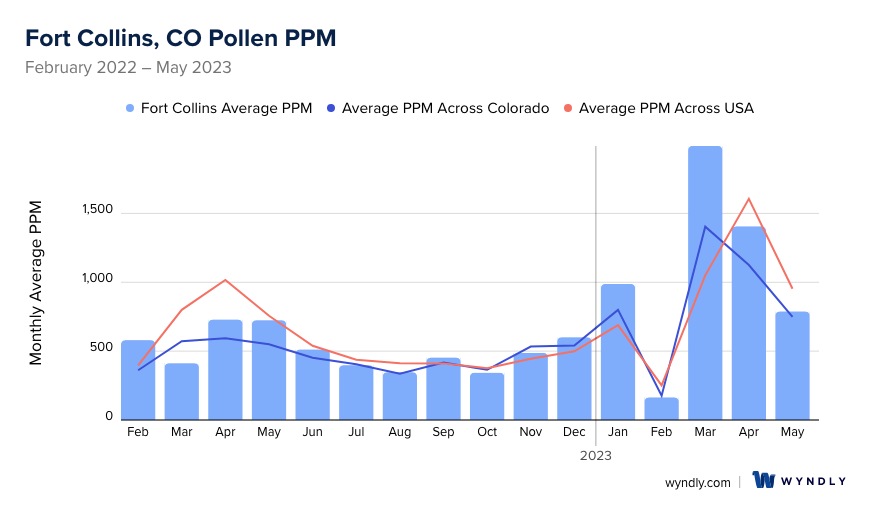
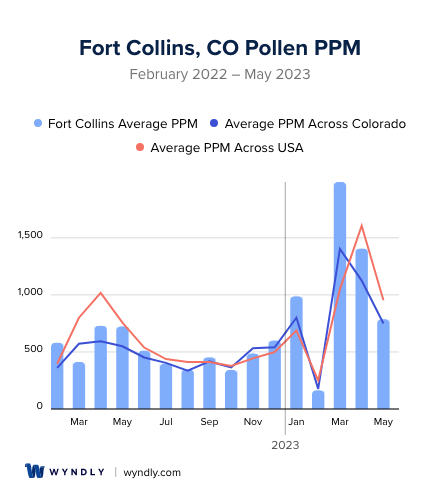
Fort Collins, CO Pollen and Allergy Breakdown by Month
Grass
When is grass pollen highest in Fort Collins, CO?
February has the highest grass pollen in Fort Collins, CO with an average PPM of
When is grass pollen lowest in Fort Collins, CO?
December has the lowest grass pollen in Fort Collins, CO with an average PPM of
Tree
When is tree pollen highest in Fort Collins, CO?
March has the highest tree pollen in Fort Collins, CO with an average PPM of
When is tree pollen lowest in Fort Collins, CO?
September has the lowest tree pollen in Fort Collins, CO with an average PPM of
Weed
When is weed pollen highest in Fort Collins, CO?
November has the highest weed pollen in Fort Collins, CO with an average PPM of
When is weed pollen lowest in Fort Collins, CO?
February has the lowest weed pollen in Fort Collins, CO with an average PPM of
Fort Collins, CO Pollen Monthly Breakdown by Pollen Type
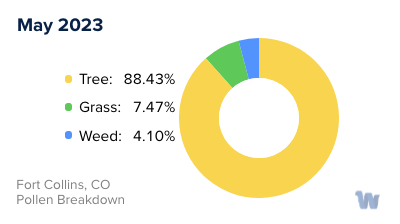
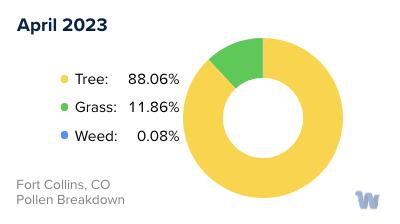
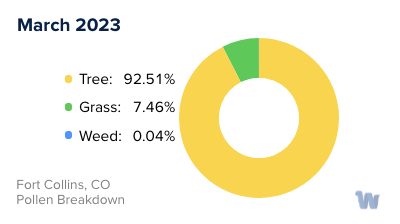
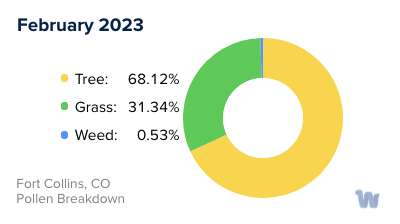
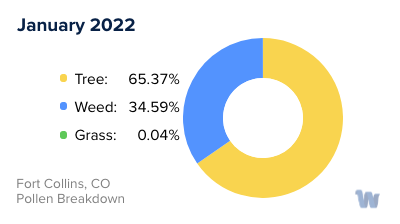

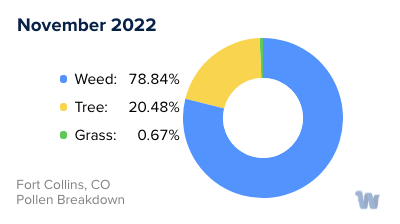
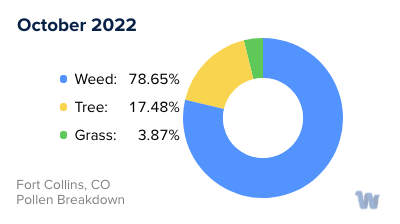
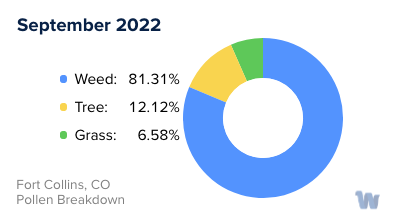
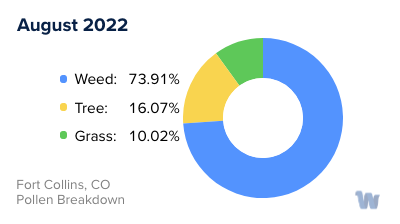
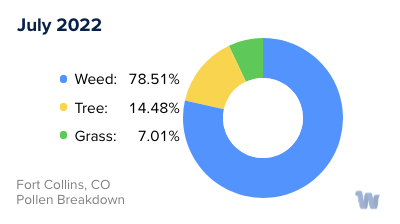
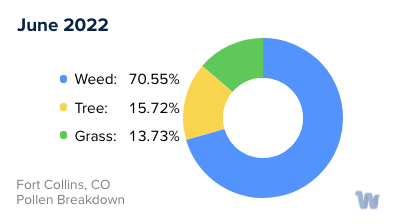
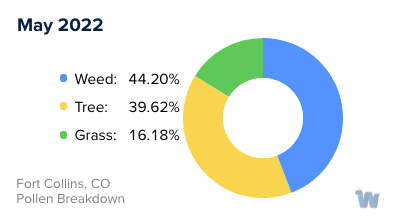
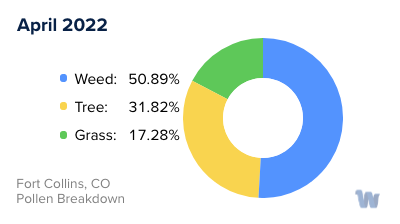
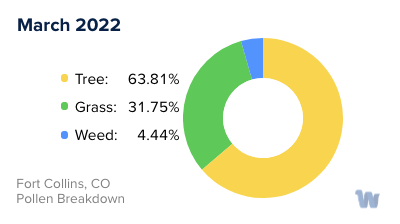
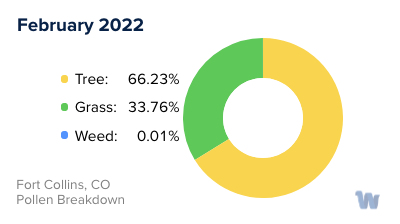
Pollen and Hay Fever in Fort Collins, CO
Living in the vibrant city of Fort Collins, Colorado, brings with it many joys, from the stunning view of the Rocky Mountains to the city's rich cultural and recreational opportunities. However, for some residents, certain times of the year also bring the less enjoyable experience of pollen allergies, often referred to as hay fever.
Fort Collins, like many places, experiences seasonal pollen cycles, which can have a significant impact on those susceptible to these allergens. The three primary types of pollen that cause allergies in the Fort Collins area are tree pollen, grass pollen, and weed pollen.
Tree pollen is the first to make an appearance each year. As winter transitions into spring, trees begin their pollination process, which usually peaks in April and May. In Fort Collins, some of the most common trees that produce allergy-inducing pollen include oak, cedar, pine, and cottonwood. The fine, powdery substance can easily become airborne, irritating sensitive noses and eyes.
As spring gives way to summer, grass pollen takes center stage. In Colorado, common culprits include ryegrass, Kentucky bluegrass, and Timothy grass. Grass pollen season can extend from May through to early July, with the highest concentrations often observed in June.
Finally, as summer transitions into fall, weed pollen emerges. In Fort Collins, this primarily involves ragweed, but other plants like sagebrush, lamb's quarters, and Russian thistle also contribute. Weed pollen can be prevalent from August until the first frost, which typically occurs in October.
Understanding these pollen seasons can be key for those living in Fort Collins who are susceptible to hay fever. By keeping track of the times of year when certain types of pollen are most prevalent, individuals can better anticipate and manage their symptoms, making the most of life in this beautiful city. Remember, no one should let pollen allergies overshadow the joy of residing in such a wonderful place like Fort Collins, Colorado.


